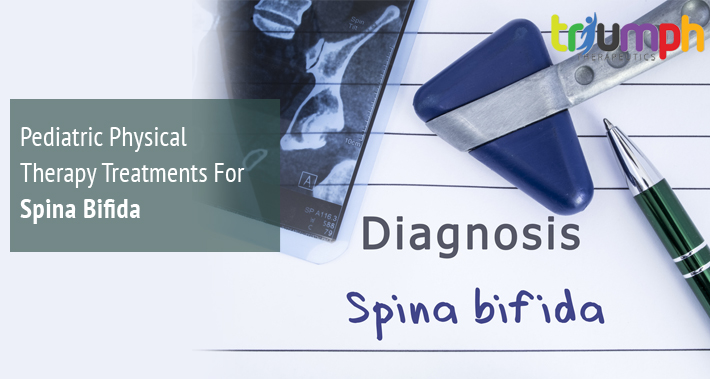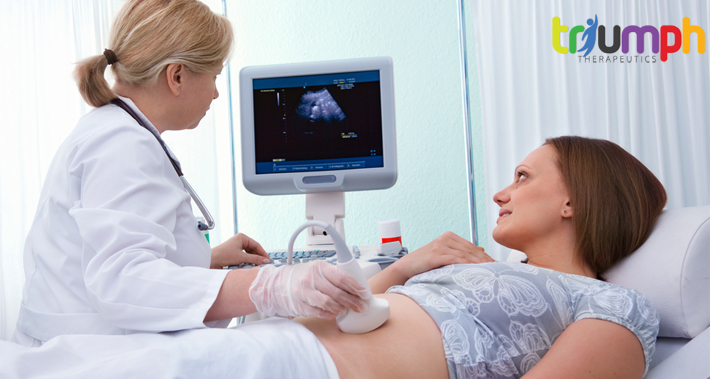Pediatric Physical Therapy Treatments For Spina Bifida
https://www.triumphtherapeutics.com/wp-content/uploads/2022/09/Triumph-Therapeutics-Speech-Therapy-OT-Physcial-Therapist-Washington-DC-Sep03-01-2022.jpg 710 379 Triumph Therapeutics Triumph Therapeutics https://www.triumphtherapeutics.com/wp-content/uploads/2022/09/Triumph-Therapeutics-Speech-Therapy-OT-Physcial-Therapist-Washington-DC-Sep03-01-2022.jpgSpina bifida is a relatively common congenital condition which can lead to various lifelong disabilities.
Approximately 1,500 babies born in the United States are diagnosed with some form of spina bifida each year.
Early intervention for children with spina bifida is crucial to support their health and prevent spina bifida related complications, such as leg weakness or paralysis.
Typically, children diagnosed with spina bifida require help from a team of health care providers.
Last time, we talked about the many benefits of pedatric occupational therapy treatments for spina bifida.
Today, we’ll discuss how a pediatric physical therapist near me can help improve your child’s spina bifida symptoms and prevent complications.
Keep reading to find out more.
What Is Spina Bifida?
Spina bifida is a lifelong condition caused by a congenital issue in your baby’s spinal cord.
During the first trimester of pregnancy, your baby’s neural tube is busy developing into a spinal cord.
In children with spina bifida, the neural tube doesn’t fully closeand a gap develops in the spinal cord.
Subsequently, the bones surrounding the spinal cord don’t form correctly and may lead to spinal cord and nerve damage.
This damage can result in various physical and cognitive disabilities.
Spina bifida can occur anywhere along the spinal cord.
The three most common types of spina bifida are myelomeningocele, meningocele, and spina bifida occulta.
Spina bifida myelomeningocele occurs when the nerve tissue, spinal cord, and spinal fluid leak out of a gap in the spinal cord.
This causes a visible sac on the baby’s back and results in nerve damage.
Myelomeningocele is the most severe form of spina bifida.
Spina bifida meningocele also occurs when the nerve tissue, spinal cord, and spinal fluid are leaking out of gap in the spinal cord and creates a visible sac.
However, this type of spina bifida doesn’t result in nerve damage.
Subsequently, the physical symptoms associated with meningocele are typically milder.
Finally, spina bifida occulta occurs when a gap exists in one or more of the bones that make up the spine.
This type of spina bifida is often referred to as “hidden” because it doesn’t produce a visible sac and rarely causes significant physical symptoms.
Spina bifida occulta is the most common and least severe form.
Spina Bifida Symptoms
Spina bifida may result in a variety of physical and cognitive symptoms.
The severity of these symptoms can range from mild to severe depending on a number of factors, including:
• The size and location of the gap in their spine
• How much of the spinal cord and nerves are affected
• Whether or not other issues associated with spina bifida are present
Gaps existing in higher parts of the spine typically cause more severe symptoms; however, gaps in the lower spine are more common.
Common symptoms of spina bifida include:
- Difficulty moving legs to crawl or walk
- Problems with blood flow in the legs due to limited muscle use
- Weak bones and joints, or bones that are curved or misshaped
- Weak or paralyzed legs due to spinal cord and nerve damage
- Difficulties going to the bathroom, such as incontinence
- Sexual dysfunction
- Sensitive skin
Additionally, spina bifida often occurs alongside other conditions, such as:
- Chiari II malformation, which causes part of the brain to push through the opening at the bottom of the skull
- Hydrocephalus, which causes too much fluid to build up around the brain
- Tethered spinal cord, which causes part of the spinal cord to attach to a bony defect
What Causes Spina Bifida?
We’ve already explained how spina bifida develops due to atypical spinal cord development.
However, the exact reason for this abnormality has yet to be discovered.
Researchers have identified several factors that may increase your risk of having a baby with spina bifida, including:
- Vitamin B9 deficiency
- Family history of neural tube defects
- Use of certain medications during pregnancy, such as the drug Equetro, used to treat epilepsy, bipolar mania, and other conditions
- Diabetes
- Obesity
- Increased body temperature (hyperthermia) during the first few weeks of pregnancy
Diagnosing Spina Bifida
Spina bifida is commonly diagnosed during pregnancy.
Several techniques may be used for early diagnosis of spina bifida, including:
- Ultrasound
- Testing the amniotic fluid around your baby (amniocentesis)
- Blood testing
Spina bifida can be detected as early as 16 to 18 weeks into your pregnancy.
However, in cases where the gap in the spinal cord is small or hidden, diagnosis may not occur until birth or when symptoms start.
In these cases, an x ray is typically used to diagnose.
How Can Pediatric Physical Therapy Help With Spina Bifida?
Physical therapy plays an important role in the treatment and management of spina bifida symptoms.
Your child’s physical therapist can work with them from birth to help them reach their developmental milestones and improve their movement and independence.
In the long term, pediatric physical therapy can help to prevent or reduce spina bifida related complications.
Your child’s physical therapist will begin with a general pediatric evaluation in order to better understand your child’s specific strength and limitations.
The evaluation may include:
- Gathering birth and developmental history
- Asking general health questions
- Listening to parental concerns
- Conducting a physical exam
- Conducting motor development tests
- Giving referrals to a Washington DC pediatric occupational therapist
- Giving referrals to a pediatric speech therapist near me
After the evaluation, your child’s physical therapist will create an individualized plan designed to suit the unique needs of your child.
Physical therapy for spina bifida may include:
- Exercises such as gait training, treadmill training, and exercises to improve strength and balance
- At home activities
- Use of supportive equipment, such as orthotics, walkers, or wheelchairs
Physical therapists are trained to work with your child in a variety of settings.
The setting of your child’s therapy can also influence the methods used.
For instance, physical therapy that takes place in an intensive care unit might focus on infant positioning and family education.
In contrast, school based physical therapy might focus on helping your child take part in school activities and recommending supportive equipment to use at school.
Book Your Appointment With Triumph Therapeutics Today
Do you have a child with spina bifida?
Are you interested in hearing more about how physical therapy can help your child?
At Triumph Therapeutics, we are dedicated to helping your child improve their symptoms and reduce their chances of experiencing complications.
Book an appointment with Triumph Therapeutics today to help your child reach their fullest potential.


